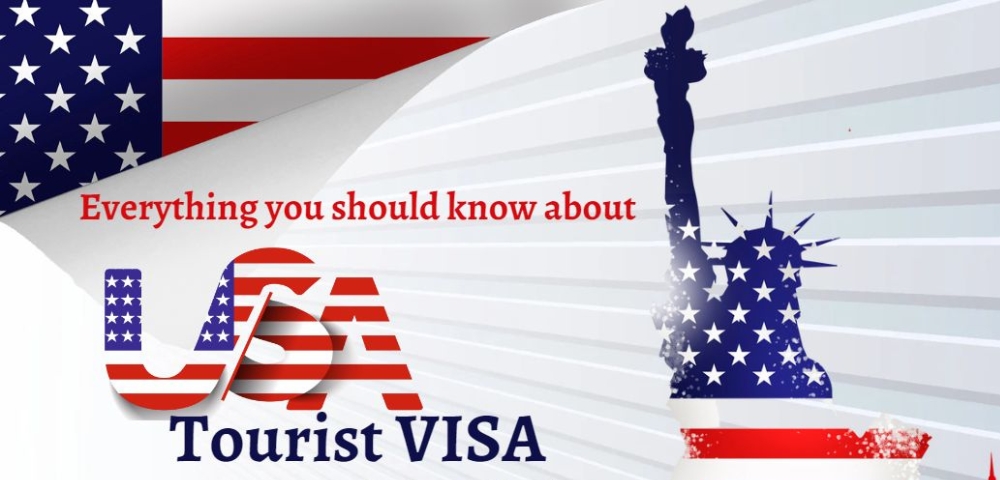
Traveling to the United States for a visit, whether for tourism, business, or meeting family, requires a USA Visit Visa for most foreign nationals. The USA Visit Visa is a gateway for individuals worldwide to explore, work, or reconnect with family in the United States. Navigating the application process requires a clear understanding of the requirements, emphasizing the demonstration of temporary intent, adherence to U.S. immigration laws, and preparedness for potential visa denial. This informational guide offers an insightful breakdown of these critical elements, helping applicants to successfully obtain their visas while ensuring compliance with U.S. laws. It serves as a comprehensive resource for those planning to navigate the complexities of the USA Visit Visa process.
When planning a trip to the United States, understanding the types of USA Visit Visas available is crucial. Primarily, there are two categories: B-1 for business purposes and B-2 for tourism, family visits, or medical treatment. These visas are integral to U.S. immigration policy, facilitating short-term, non-immigrant travel to the U.S.
For B-1 visas, the focus is on business-related activities like attending conferences, negotiating contracts, or consulting with business associates. Applicants must demonstrate temporary intent to stay, showing that they plan to return to their home country post-visit. This is a key aspect of ensuring compliance with U.S. laws and avoiding potential visa denial.
The B-2 visa is designed for those traveling for leisure, tourism, or personal reasons. This includes visits to family or friends, medical treatment, or participation in social events. Like the B-1, applicants for a B-2 visa must also prove temporary intent and a clear plan to return to their home country, abiding by the conditions of U.S. immigration.
Both US visa application types require applicants to prove they have no intention of abandoning their residence abroad. The key to a successful USA Visit Visa application lies in demonstrating strong ties to one’s home country and a clear understanding of and compliance with U.S. immigration laws to avoid visa denial.
Demonstrating Temporary Intent A key requirement for obtaining a USA Visit Visa is proving temporary intent. Applicants must demonstrate that their visit to the U.S. is for a specific, limited period. Evidence of ongoing employment, family ties, or property ownership in the home country can strengthen the application by showing that the applicant has significant reasons to return.
The application process for a USA Visit Visa involves several key steps, emphasizing compliance with U.S. laws and the demonstration of temporary intent. Initially, applicants must complete the Online Nonimmigrant Visa Application, Form DS-160. This form captures personal and travel information, crucial for U.S. immigration authorities to assess the applicant’s eligibility and intent.
After submitting the DS-160, applicants schedule an interview at the nearest U.S. Embassy or Consulate. The interview is a critical component where applicants must demonstrate their temporary intent to visit the U.S. and their plans to return to their home country. It's essential to prepare for questions related to the purpose of the visit, duration of stay, and ties to the home country.
Applicants must also pay the required visa application fee, a mandatory part of the process. Following this, gathering and preparing the necessary documentation is crucial. This includes a valid passport, confirmation page of the DS-160 form, receipt of the application fee, and a photograph as per U.S. visa specifications.
Throughout the process, it's imperative to ensure compliance with U.S. laws. Any past violations or misrepresentations can lead to visa denial. Applicants should approach the process with transparency and a clear understanding of the requirements set forth by U.S. immigration authorities.
The application process involves several steps:
Compliance with U.S. laws is a critical aspect of the USA Visit Visa process. Applicants must not have a history of violating U.S. immigration laws or other U.S. laws. Past violations can lead to visa denial. Applicants should be prepared to answer questions regarding their background and purpose of visit honestly and comprehensively.
Demonstrating financial stability is essential. Applicants must show that they have enough funds to cover their expenses during their stay in the U.S. This includes travel, accommodation, and living expenses. Bank statements, employment letters, and sponsorship letters (if applicable) are commonly used to prove financial capability.
The visa interview is a critical component of the USA Visit Visa process. Applicants should be prepared to discuss their travel plans, ties to their home country, and financial situation. Required documents typically include a valid passport, DS-160 confirmation page, application fee receipt, photo, and any supporting documents relevant to the applicant’s specific situation.
Visa denial is a reality for some applicants. Common reasons for denial include insufficient evidence of ties to the home country, inadequate financial resources, or previous violations of U.S. immigration laws. Understanding the grounds for inadmissibility can help applicants address potential issues in their application.
The duration of stay is determined by U.S. immigration officers at the port of entry, not by the visa's validity. Visitors typically receive a stay period of six months. Extensions can be requested but must be justified and fall within the guidelines of temporary intent.
Certain nationalities may be eligible for the Visa Waiver Program, allowing visits to the U.S. for up to 90 days without a visa. However, waiver program travelers must obtain authorization through the Electronic System for Travel Authorization (ESTA) before their trip.
Navigating the USA Visit Visa process involves understanding and adhering to U.S. immigration laws, clearly demonstrating temporary intent, ensuring compliance with all requirements, and preparing for the visa interview. While visa denial can occur, proper preparation and understanding of the process enhance the chances of approval. It is advisable for applicants to stay informed about the latest requirements and procedures, as U.S. immigration policies may change.
This guide aims to demystify the USA Visit Visa process, emphasizing the importance of compliance, preparation, and understanding U.S. immigration laws. By following these guidelines, applicants can approach their visa application with greater confidence and clarity.